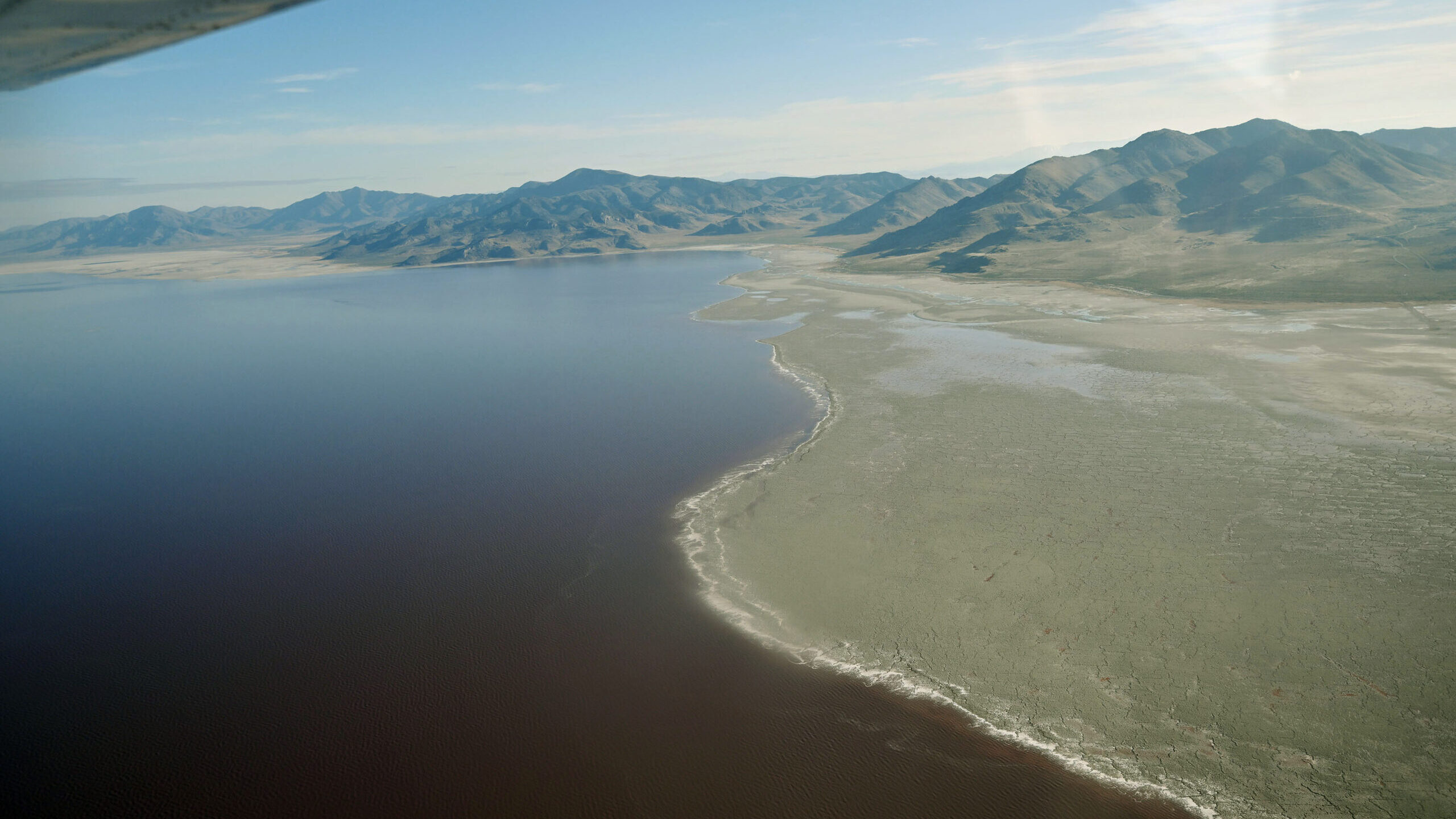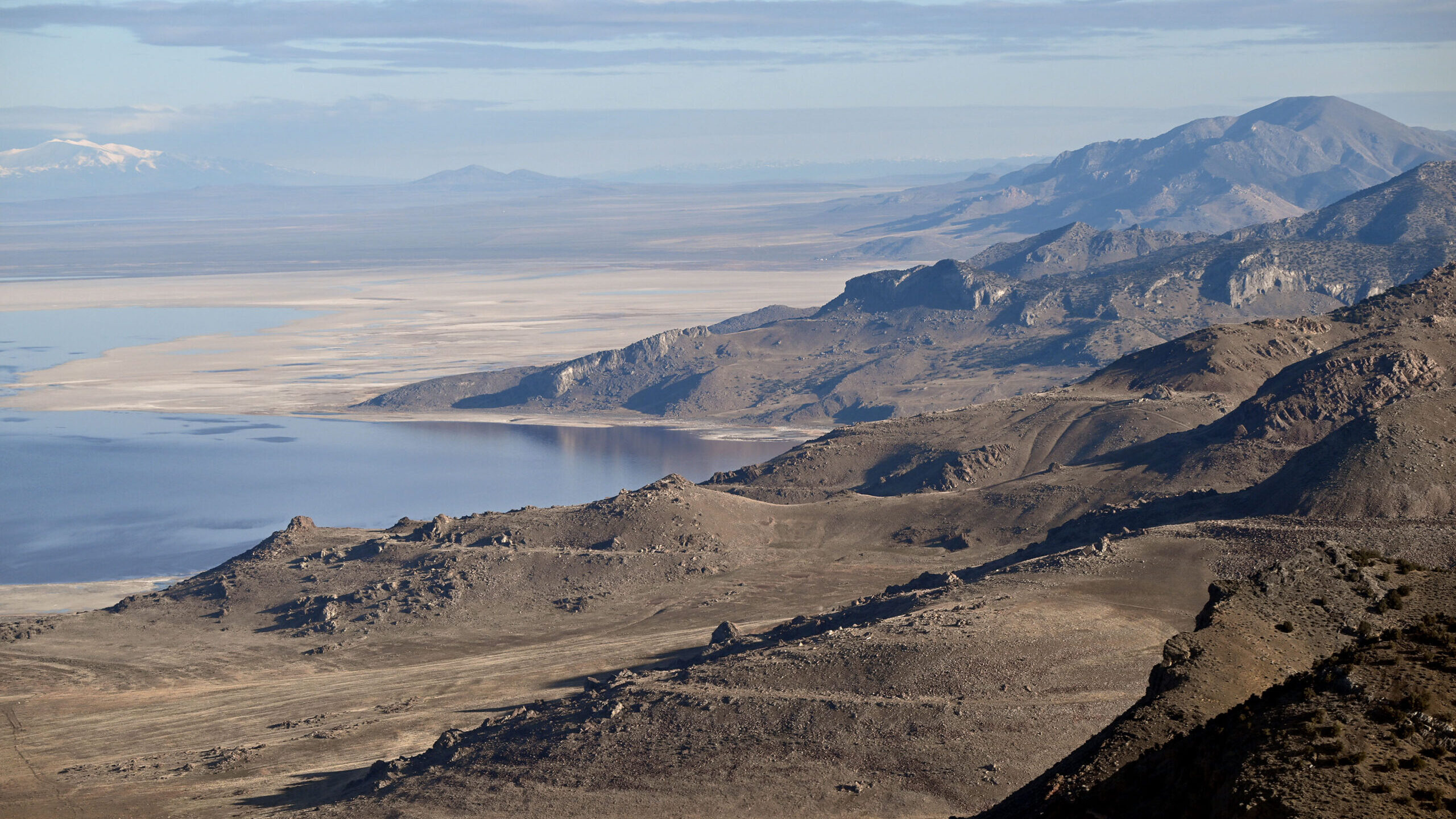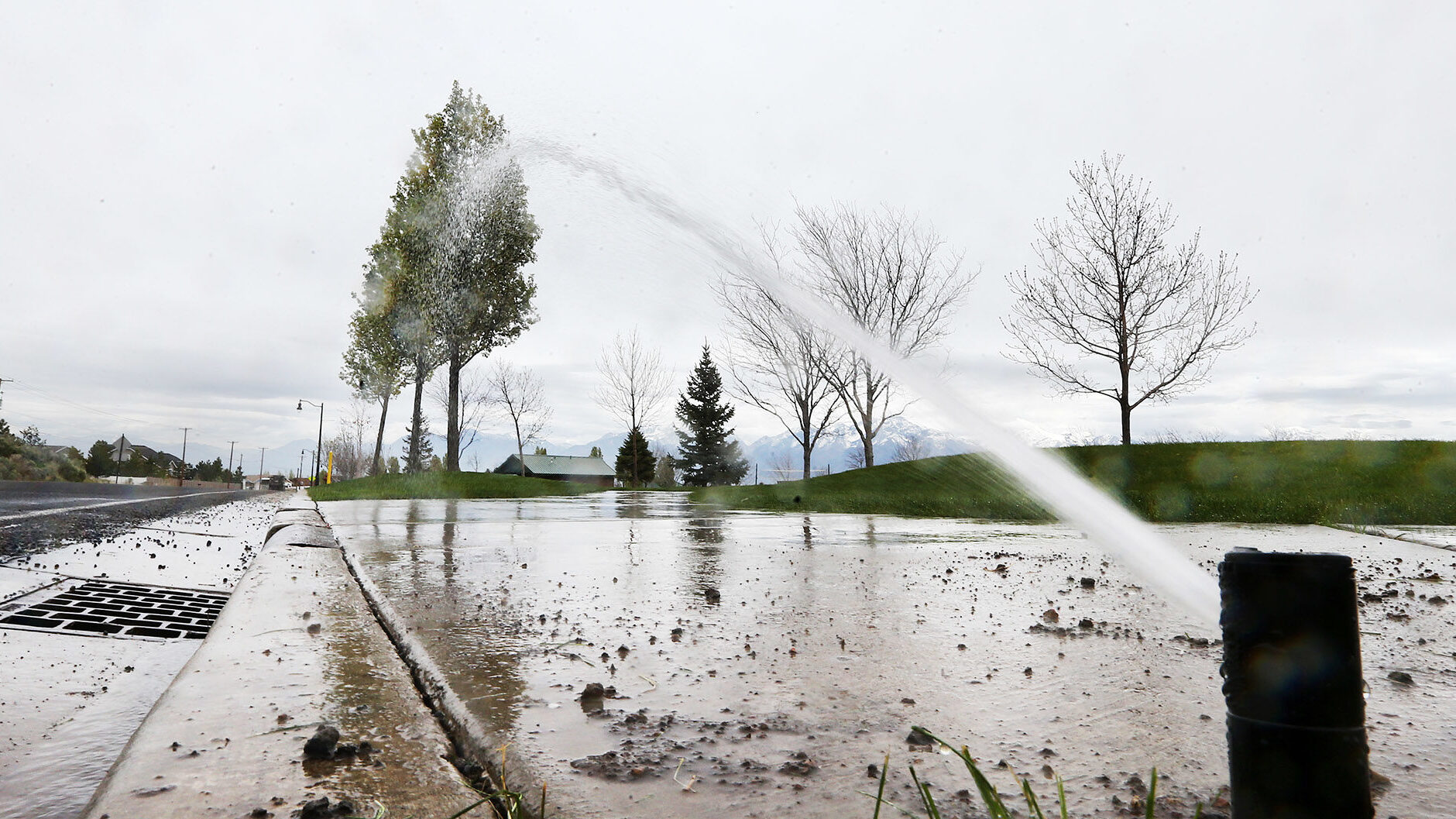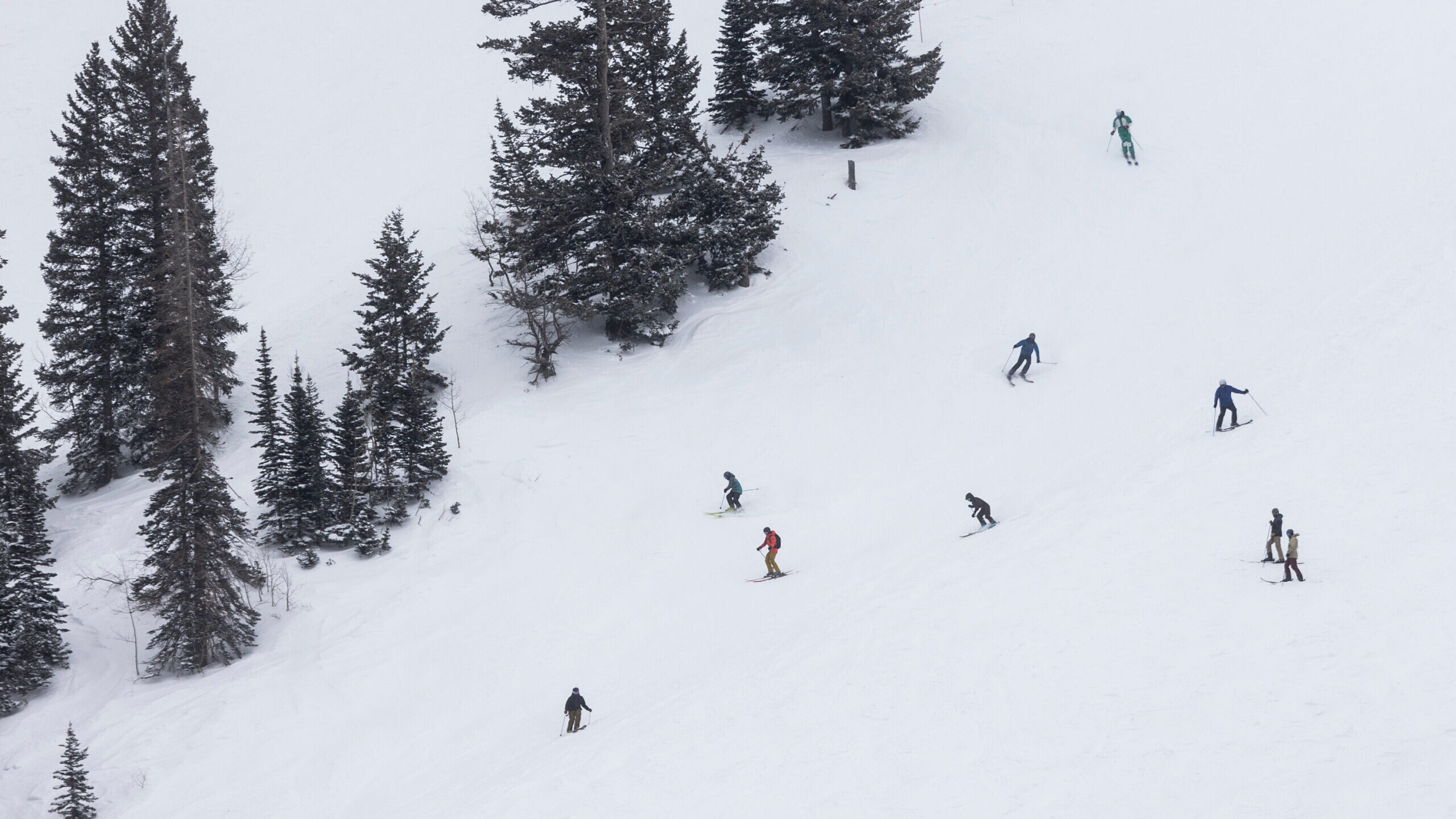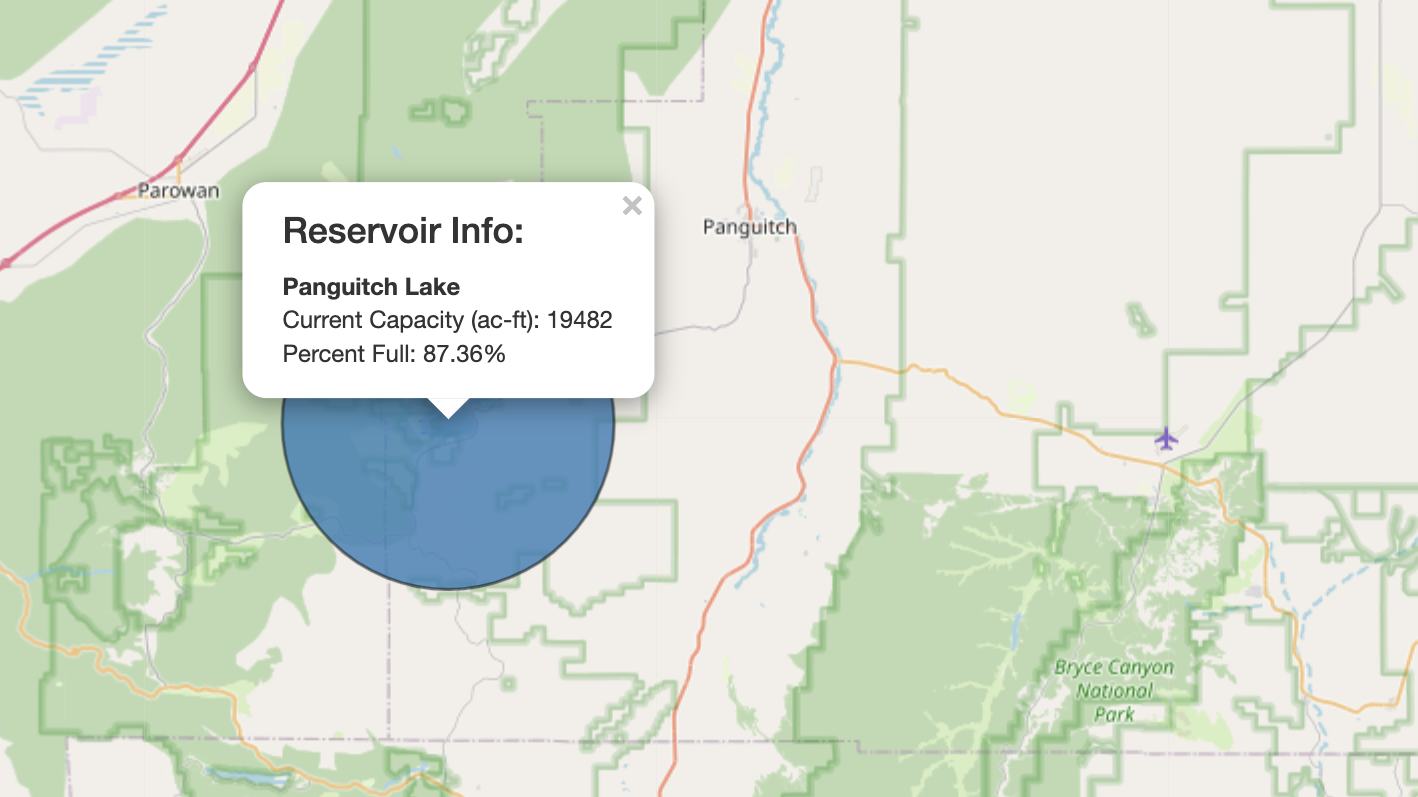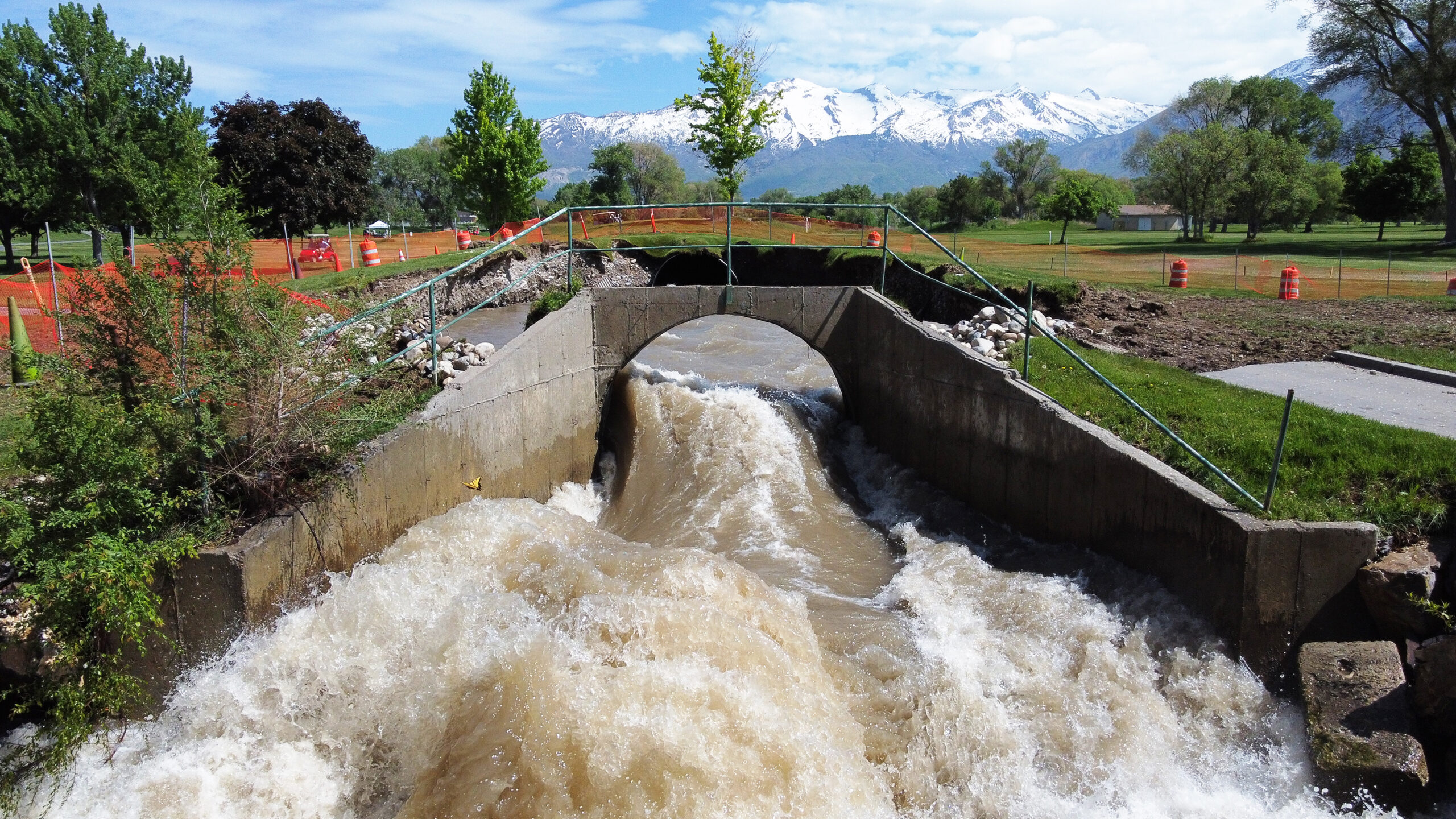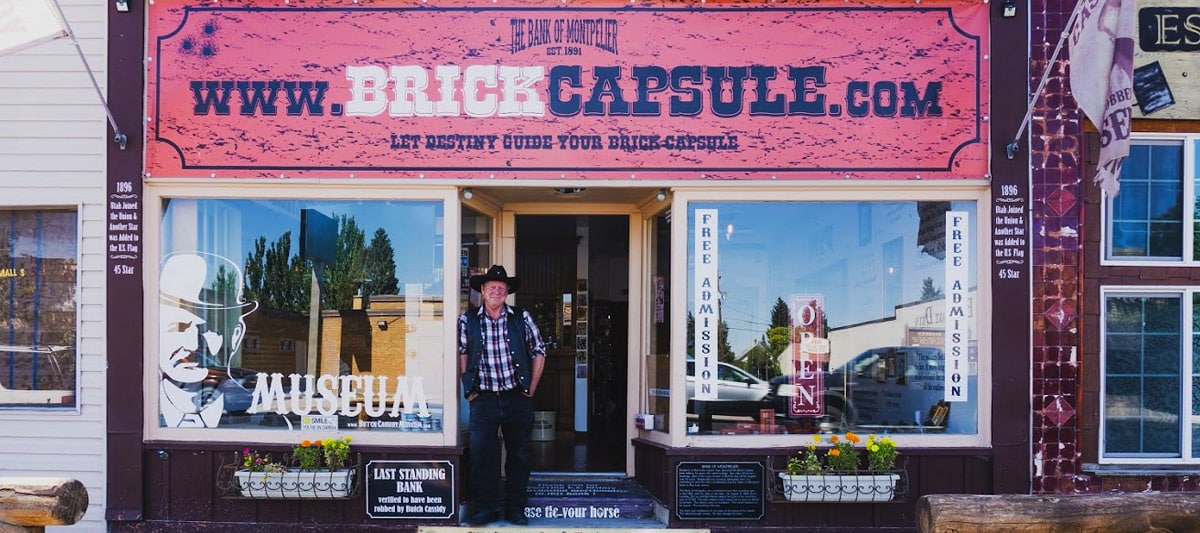Great Salt Lake Collaborative intern Alexis Perno contributed to this story.
Tribes still not consulted as state tries to save Great Salt Lake
Feb 10, 2023, 8:30 AM | Updated: 8:40 am
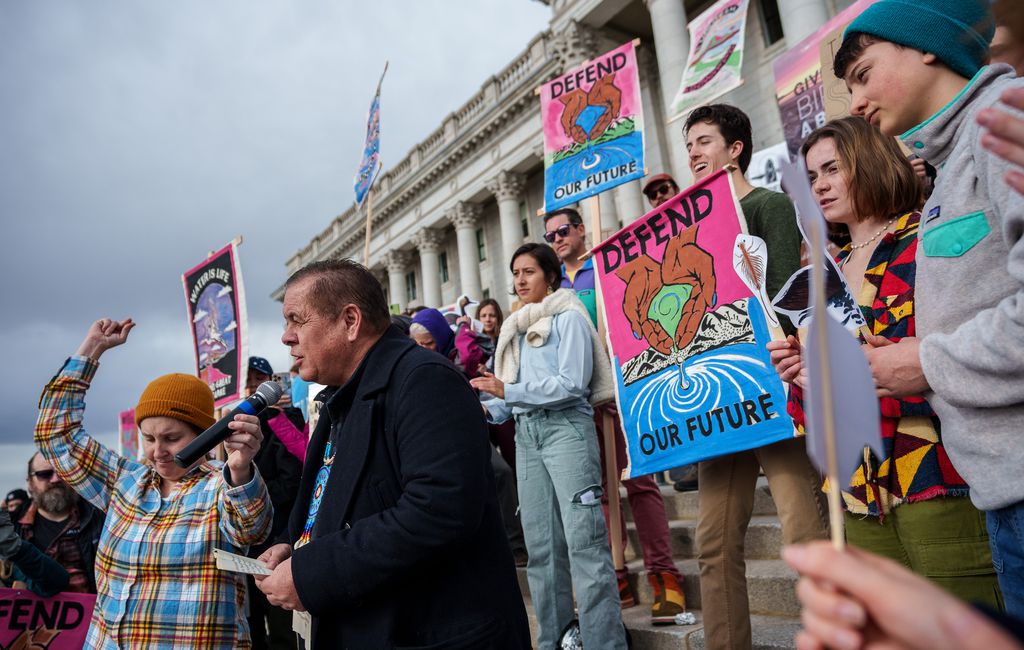
Former chairman of the Northwestern Band of the Shoshone Nation Darren Parry speaks at a "Rally to Save Our Great Salt Lake" at the Capitol building in Salt Lake City on Saturday, Jan. 14, 2023. (Trent Nelson, The Salt Lake Tribune)
(Trent Nelson, The Salt Lake Tribune)
This article is published through The Great Salt Lake Collaborative: A Solutions Journalism Initiative, a partnership of news, education and media organizations that aims to inform readers about the Great Salt Lake.
Utah leaders have redesigned the state flag to better represent tribal nations. But when it comes to policy — specifically about saving the Great Salt Lake — native representation is conspicuously lacking.
The lake has dramatically declined and dried. As it sits on the cusp of becoming an environmental tragedy and a public health disaster, lawmakers and policymakers are busy drafting solutions to try and save it. House Speaker Brad Wilson’s $40 million Great Salt Lake Trust, established last year, is finally gaining some momentum as the Audubon Society, the Nature Conservancy and the Utah Division of Forestry, Fire and State Lands announced last week they’ve forged a deal on how to manage the funds.
The agreement creates an advisory council representing the lake’s stakeholders — but no local tribal leaders were included, even though some have ties to the Great Salt Lake that go back millennia.
“We haven’t heard anything from anybody,” said Darren Parry, a tribal historian and former chairman of the Northwestern Band of the Shoshone Nation. “That’s been my contention all along. How do you solve this problem without engaging with people who’ve managed the resource for thousands of years? It’s a little frustrating.”
Parry shared his exasperation on Twitter shortly after news broke of the Great Salt Lake Trust’s new council members.
“Do you know who is not at the table?” Parry wrote. “Native people.”
The lack of representation isn’t limited to this board alone. State leaders have established numerous groups and panels to pen reports and provide recommendations about the lake.
In 2010, the Legislature formed the Great Salt Lake Advisory Council. As with the council for the lake’s $40 million trust, the advisory council is comprised of parties that have interests in the lake, like brine shrimp harvesters, mineral extractors and conservationists. It has newer spin-off groups, such as the Salinity Advisory Committee and the Technical Team, which include scientists and land managers. None of these panels include or require members that voice an Indigenous perspective.
“Look, science is science. We absolutely need the science,” Parry said. “But all the science in the world will not make up for our selfish behaviors. To assume scientific knowledge is superior to Indigenous wisdom, that kind of thought process can be harmful.”
STATE LEADERS RESPOND
A spokesperson for Wilson’s office declined to comment on the makeup of the boards but noted the Great Salt Lake Trust was set up under the discretion of the Division of Forestry, Fire and State Lands.
A spokesperson for the division, in turn, noted Wilson’s bill, which created the trust, specifies the number of council members and the interests they are supposed to represent.
That list does not include any tribal members. It does include representation for adjacent landowners, agriculture, bird conservationists, aquaculture, mineral extraction, water districts and wastewater facilities.
Still, the division spokesperson noted that the trust is “still in its early stages,” adding the division “supports the inclusion of local tribal leaders on additional councils.”
“We want their input,” said Joel Ferry, a former state representative and current director of the Utah Department of Natural Resources, which oversees the division. “Unfortunately, it didn’t make it into that legislation.”
Gov. Spencer Cox, too, said he supports adding native voices to discussions about the Great Salt Lake.
“We are never opposed to tribal representation on these important water issues,” he said in an emailed statement. “In fact, we created a new seat on the Colorado River Commission specifically for them. If the Legislature is interested in adding representation from the tribes, we would support that legislation.”
So if all the state leaders are on board with native representation in policy planning for the Great Salt Lake, why have they been ignored for so long?
“I’ve been calling attention to the problem that the Indigenous perspective has been kept out,” Parry said, “and still haven’t received a phone call.”
‘WE STILL HAVE THRIVING CULTURES HERE’
The native people who occupied the Great Salt Lake Basin before the Mormon Pioneers arrived are currently scattered along the Wasatch Front, which could partly explain the oversight.
“Our story would have been a little different,” Parry said, “if we had a reservation on the north end of the lake.”
The Northwest Shoshone experienced the most horrific slaughter of native people in U.S. history during the Bear River Massacre in 1863.
While some of the surviving tribal members relocated to the Fort Hall Reservation in Idaho, many chose to remain in their homeland near the Great Salt Lake. They were baptized into Utah’s predominant faith, The Church of Jesus Christ of Latter-day Saints. While Parry said those tribal members may have felt motivated by a genuine spiritual connection, he conceded the conversion was, at least in part, a means of survival.
“Man, if I’m there living in those times, and I really want to stay in this area, you join them,” Parry said. “You survive. You live to fight another day. That’s not lost on me at all.”
It meant giving up their nomadic hunter-gather lifestyle. It meant watching the bison, beavers and grizzly bears they once considered kin get driven out by farms, businesses and subdivisions. It meant they watched the Great Salt Lake — a place the Northwest Shoshone hold sacred, Parry said, as the heart of their creation story — shrivel as its water got siphoned away.
“People think of us as a long-gone thing that used to be,” Parry said. “… Native Americans aren’t relics of the past. We still have thriving cultures here.”
Leaders from Utah’s many tribes shared their rich historical ties to the Great Salt Lake at a forum hosted by the University of Utah in September.
“Our people are buried there,” said Rupert Steele, chairman of the Confederated Tribes of the Goshute Indian Reservation, who died late last month at 69. “… We have a spiritual connection to the area.”
Sara Dant, a professor and chair of the history department at Weber State University, said overlooking native voices in Great Salt Lake management is “typical” but also “ridiculous in this day and age.”
“The Great Salt Lake isn’t owned by anyone,” Dant said, “it is truly a public resource. Excluding Indigenous voices is just shortsighted and foolhardy.”
She said the cultures and institutions that came to dominate the United States and the West have tended to think of Native Americans as artifacts from the 19th century, but there are signs attitudes are shifting. She pointed to the close collaboration between the federal government and five tribal nations in establishing and co-managing the Bears Ears National Monument.
Indeed, federal agencies and other states have taken significant strides in recent years to improve Indigenous representation in resource and environmental management. The state regulators managing California’s desiccated Owens Lake — often cited as a worst-case scenario for the Great Salt Lake — have started including Shoshone and Paiute representation in their efforts to control toxic blowing dust from the lakebed.
They consult with tribes to ensure cultural artifacts aren’t disturbed. State officials also took a big step to walk back decades of native erasure. The California State Historical Resources Commission last year supported the designation of Owens Lake — called “Patsiata” in the native language — as a historic district.
On the federal level, President Joe Biden appointed Interior Secretary Deb Haaland as the first native cabinet head. In 2021, she announced an initiative to better include traditional ecological knowledge from tribes in resource management.
“People who have an identity that is bound to the environment and ecology in which they have lived for generations and generations,” Dant said, “have an understanding of the land that entitles them to have a say in good stewardship.”
While that native feedback remains largely lacking in conversations about the Great Salt Lake, Parry said he channels the energy of his third great-grandfather, Chief Sagwitch, a survivor of the Bear River Massacre, who was inclined to “collaborate, get along, survive and adapt.”
He has good relationships — friendships, even — with many state leaders, he said, including Wilson and Cox.
“They know my heart, they know where I’m at,” Parry said.
Still, he said it’s “disheartening” tribes can’t get a seat at the table in policymaking for the lake, given their centuries-old connection to the area.
“It’s a sense of place for us. We began there,” Parry said, “even though I’m a sixth-generation Shoshone Mormon.”


